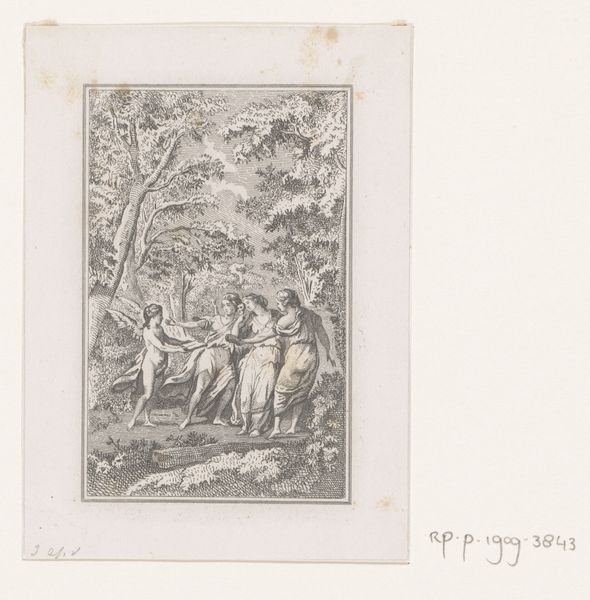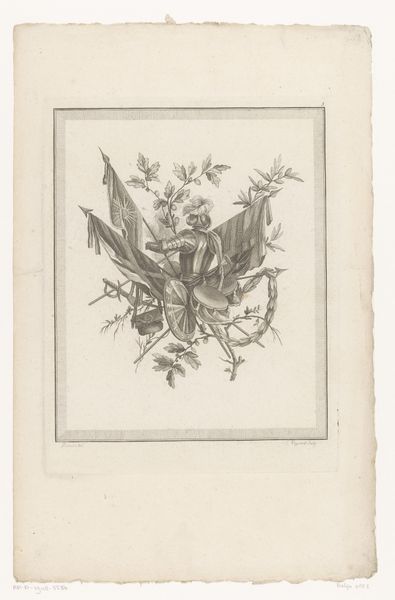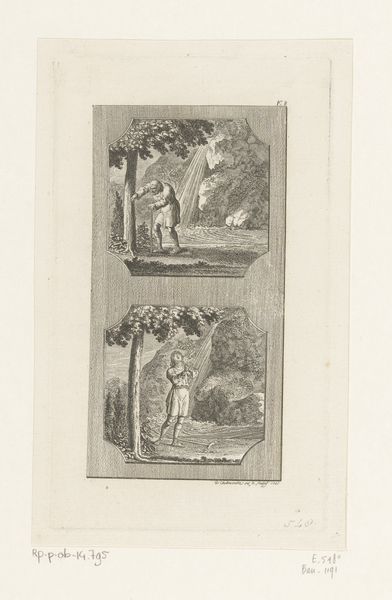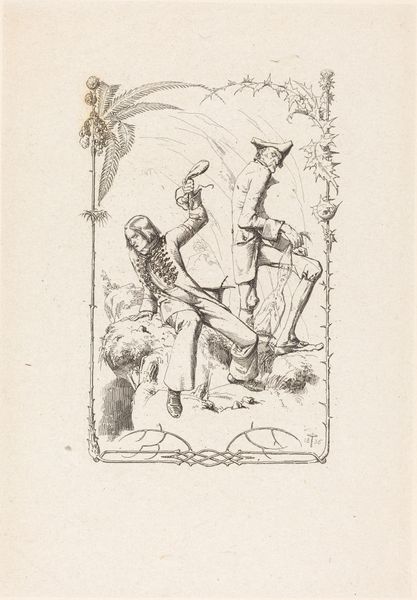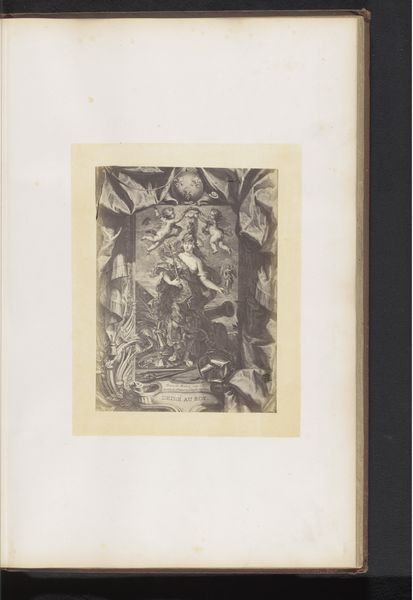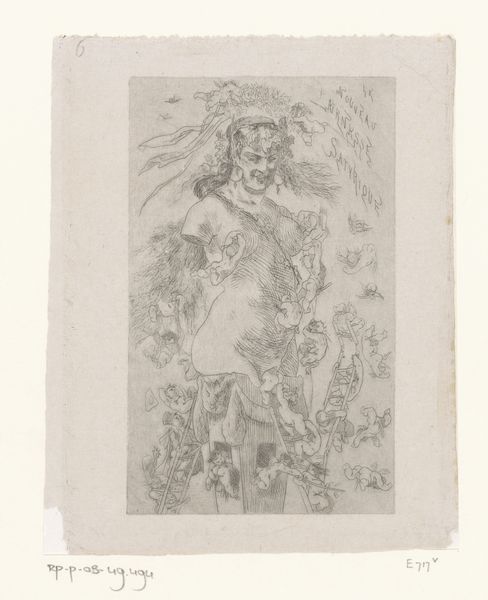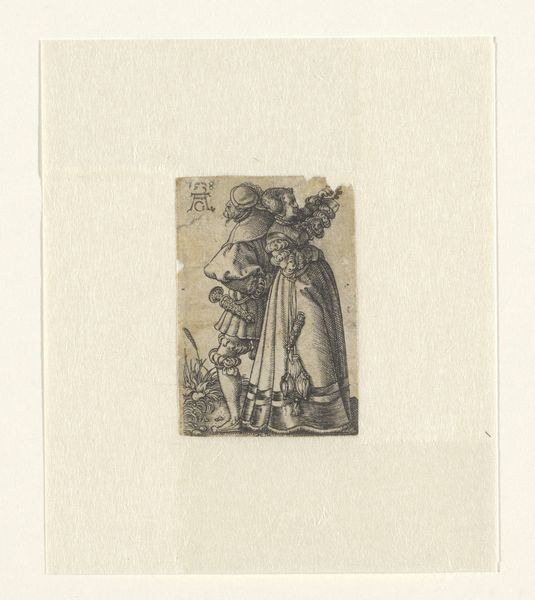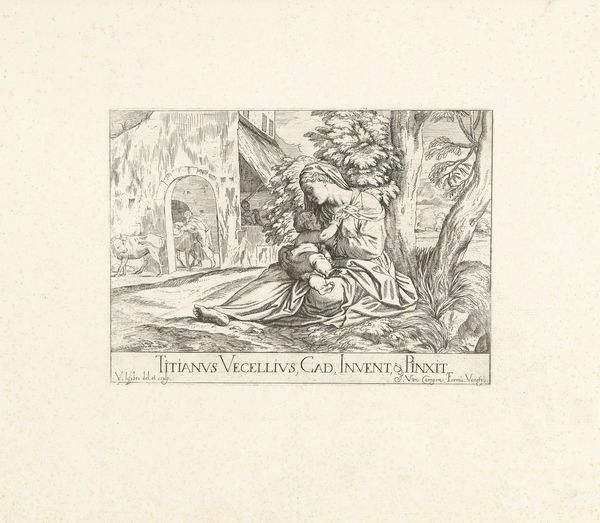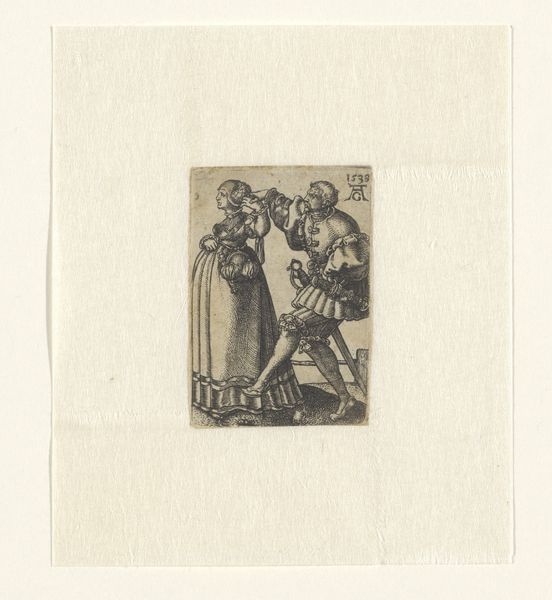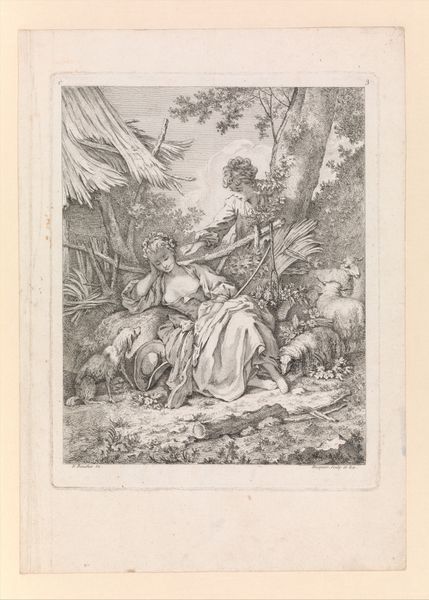
print, engraving
#
medieval
#
allegory
# print
#
figuration
#
momento-mori
#
line
#
history-painting
#
northern-renaissance
#
engraving
#
realism
Dimensions: height 65 mm, width 50 mm
Copyright: Rijks Museum: Open Domain
Editor: This is "Soldaat en de Dood" or "The Soldier and Death," a print made in 1547 by Hans Holbein the Younger, currently held at the Rijksmuseum. The stark contrast and the fine lines make it quite intense, especially the depiction of Death himself. What kind of imagery do you see reflected in the historical context? Curator: Holbein masterfully uses the Dance of Death motif. Here, death isn't a distant concept, but a very active participant in life, engaging the soldier directly in combat. How does that strike you, thinking about it symbolically? Editor: It’s disturbing! Death is typically seen as this distant inevitability, but here he's literally battling a soldier, it suggests a world consumed by conflict. Curator: Exactly. The print reflects anxieties of the 16th century, marked by wars and the ever-present threat of disease. The soldier, in his ornate armor, represents power and worldly ambition, while Death, the skeletal figure, acts as a Memento Mori. Note the contrast - what does that communicate to you? Editor: The contrast…It makes you think that no matter your status or strength, death comes for everyone eventually. Like a reminder that everything is ephemeral. Curator: Precisely. The skeletal figure isn’t terrifying, it's persistent. It underscores the futility of earthly power against the universal force of death. It’s interesting to consider this print's resonance today – what do you think it tells us in a contemporary light? Editor: It speaks to our fears about mortality but also to how conflicts can distort values. Even in a world of technological advancements, mortality is universal. Curator: It really showcases Holbein's capability to distill complicated truths into one very small space. Visual symbols become powerful echoes of our past and present.
Comments
No comments
Be the first to comment and join the conversation on the ultimate creative platform.
